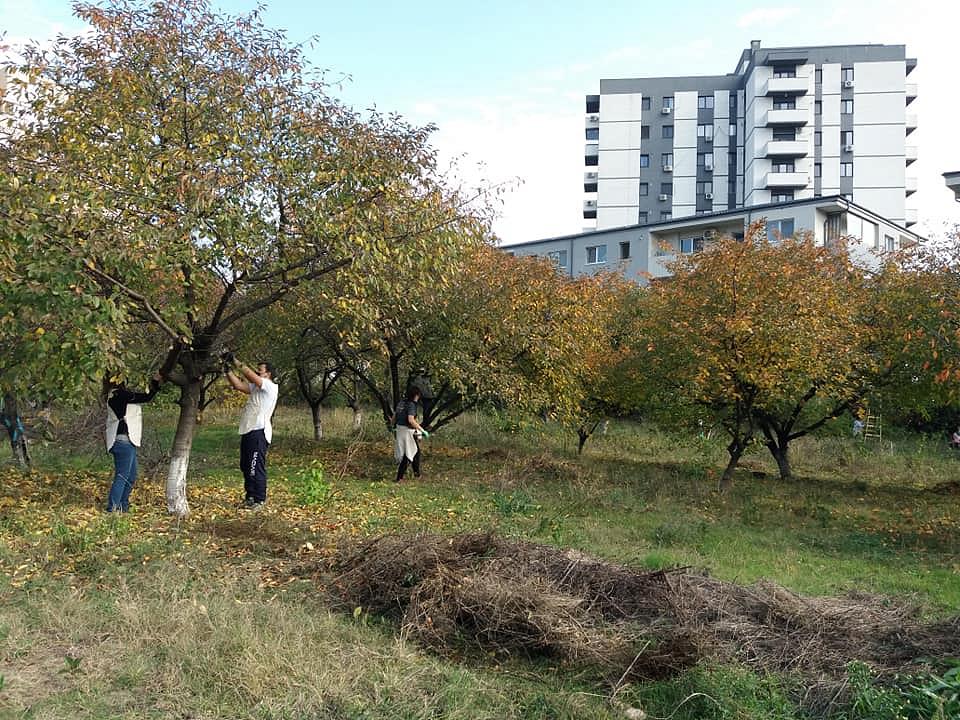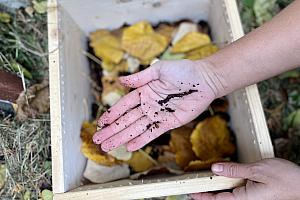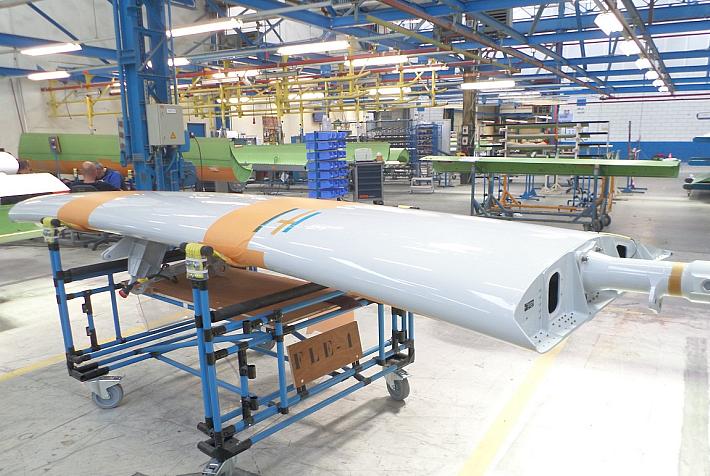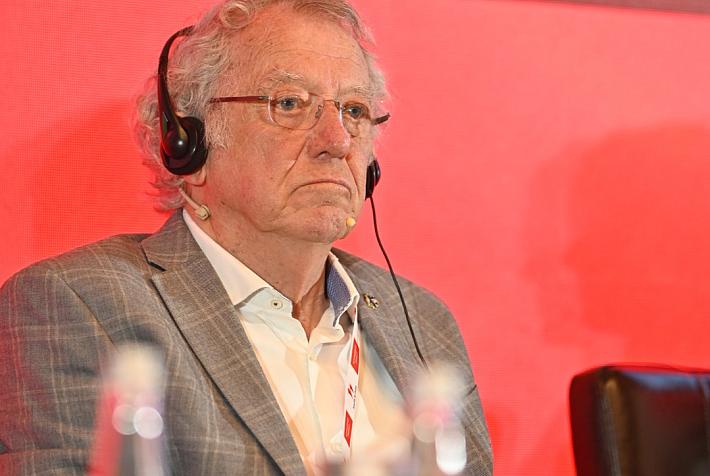How a group of Bucharest volunteers developed a community orchard in their neighborhood

A group of volunteers’ dream of a community garden came to life this year, when the Tudor Arghezi Memorial House in Bucharest opened its doors to host the Urban Community Orchard. A project of the local initiative group Acțiunea Comunitară Tineretului ACT, it is meant to aid in the regeneration of the orchard that is part of the museum, with the neighborhood community carrying out various activities to tend to the green area. Volunteers get to spend time in nature, developing a green thumb, and one part of their neighborhood is looked after.
Writer Tudor Arghezi, a canonical name in Romanian poetry, lived starting in 1930 in a house in the southeastern part of Bucharest. Known by the name of Mărţişor, it sits between the Văcărești Nature Park and Tineretului Park. The poet and his wife are buried there, as well as the family dog Zdreanță, made known to generations of children in the poem dedicated to the fluffy mutt. After Arghezi’s death, the house was turned into a museum, today one of the several memorial houses that are part of the National Museum of Romanian Literature (MNLR) in Bucharest.
When the Bucharest Community Foundation launched a call for projects in the neighborhood, the initiative group Acțiunea Comunitară Tineretului (ACT)/Tineretului Community Action decided to apply with a community garden proposal. What they were missing was the land where the garden could be developed. The orchard at Mărţişor cropped up as a possible venue, Gabriela Iordan of the Acțiunea Comunitară Tineretului explains, and a conversation started on Facebook turned out to be the beginning of a partnership that allowed ACT to take the project from dreaming and planning phase to actual implementation. More about how the community orchard came to be, what the community is working on there, and how the trees in the orchard were adopted in the Q&A below.
How did the project come about? Did you have some international models in mind?
I had been long dreaming of an urban community garden close to where I live, similar to the ones I have seen during trips in western and northern Europe, but with the mobility and social interaction restrictions caused by the sanitary crisis, the wish started to change from a dream to a plan, followed by a search for resources to implement it close by, in the district I live.
On a personal level, I have been interested in sustainability for more than ten years: how to live better with less. When I say better, I mean doing what I like, working and spending as much free time as possible in nature, reducing my ecological and carbon footprint with all that I do and consume. After cutting back on transport, consumption, I reuse a lot of what I have, and the little I generate as leftovers, I collect separately for recycling and composting. I aim to reach the target of zero waste to landfill or incineration.
Were you set on the area at the museum from the very beginning? Did you have other locations in mind?
This spring, Fundația Comunitară București (Bucharest Community Foundation) launched a call to NGOs and initiative groups for community projects in the neighborhood. The nucleus of active members of the initiative group Acțiunea Comunitară Tineretului (ACT)/Tineretului Community Action voted on social media on several project ideas we could implement with this funding. The one that received the most votes was the community garden.
We are a little over ten people in the ACT nucleus. We are all busy, have jobs, an agitated city life; some of us also have young children. But we care about the neighborhood, the city, we want to live in a civilized way, and enjoy every day. This is why we get involved actively, with the little time we have, by moderating the Facebook group, by continuously writing petitions and notifications to the authorities, and, why not, taking part in protests, if we need to stand against a costly project, that has a negative impact on the neighborhood. The condition for writing the project was to find an appropriate place rapidly in the area or very close to the Tineretului neighborhood. And those administering the land to agree to the project.
By lucky chance, I remembered the Tudor Arghezi Memorial House. Several years ago, it took only one visit to fall in love with the house and its generous garden. I wrote them a message on their Facebook page, and the pleasant surprise was that the team at the National Museum of Romanian Literature proposed a meeting to discuss the project. What followed is, for me, more than a pleasant surprise. It is a dream come true. The MNLR team and the one at the Tudor Arghezi Memorial House are absolutely great. The fact that they embraced the innovative idea of the community project gives us hope that we can have a harmonious public-private collaboration, with advantages for both sides. Without their openness, this project would not have existed. We want to thank director Cristescu, Andreea, curator Dorotheea, the longest-serving caretaker, Ms Jeni, Ms Mirela, the guards, and the old dog Rex.
What did the start of the project entail? What does the partnership with the National Museum of Romanian Literature cover?
It took about two-three months until we signed the project. We got the green light, but without a written agreement, with as many conditions as possible agreed upon in writing, we couldn’t start the project. It was a unique experience for us to sign all the paperwork and receive the funding as private individuals, part of an informal initiative group, without a legal personality. From a community garden, we adapted the project to a community orchard. This way, the orchard behind the Tudor Arghezi Memorial House became the home of the Urban Community Orchard project.
Here, from the fall of 2021 to the spring of 2022, we have the support to organize activities to regenerate the fruit trees using mild, natural techniques; to incorporate all the inputs and outputs in a sustainable and harmonious way, using the permaculture approach; to plant trees and shrubs; compost the vegetable waste in the orchard and those from the kitchens of the residents in the area who want to save from the landfill the precious organic matter to obtain in a few months the gardener’s gold, the new black gold, namely compost – soil rich in nutrients needed for flower and aromatic plant beds.

Who can take part in the activities that take place at the orchard?
A major objective is that all these activities are carried out by the community in the area, by following the sanitary norms and the museum visiting conditions. Thus far, we are 30 members coming on a regular basis to the orchard for activities. The project is a learning space for environment education, collaboration between the community members to regenerate the orchard, a reason to keep active outdoors for our physical and mental health, with a higher purpose- regenerating the orchard.
Studies show that for our wellbeing, we need four daily hours of direct connection with nature, as is the case with gardening activities, enjoy its benefits, together with our dear ones. For this, we need to make time in our schedule for this interaction with nature in proximity areas – in front of our blocks of flats, at the garden at the school or any other type of proximity venue where help is needed in tending to its green areas.
Who can adopt a tree? What do those interested need to know?
Another objective we have is that citizens who are in the proximity of such a green area, a cultural and natural patrimony, can adopt it, tend to it, and defend it when it is in danger of being destroyed, being turned into something else, having concrete poured over it, or turned into a building site.
Lucia and Bogdan, the other two members who signed the project with an active role, had the simple but brilliant idea of encouraging volunteers who come to the orchard regularly to tend to the trees or for composting to take over tending to a tree in the orchard. An even stronger connection between the community and the orchard is thus created.
The only public communication channel is our social media page. This is where we announce the events for the wider public. Those who wanted to volunteer are enrolled in phone communication groups to discuss various special needs or smaller activities in the orchard. Both the composting and the care of the trees are done under the careful guidance of specialists: I cover the composting side and Laura, a horticultural engineer, the orchard part.
The project has activities planned until the spring of next year. What does its extension past this deadline depend on?
When we started this project, we didn’t think we would ever close it. Of course, we keep an eye out for other funding opportunities for the permanent needs of specialized equipment, technical expertise, etc.
But we have all grown attached to this area, and we have developed the habit of coming and bringing vegetable waste for composting, keep active by working in the orchard at least once a week, or every other week in the case of community events. Even without funding, we will continue to come to the orchard as long as our institutional partner, the National Museum of Romanian Literature, will welcome us. As long as we live in the Tineretului-Văcărești area and the orchard is an open area, we will come to bring here vegetable waste for composting, tend to the trees, enjoy their shade, the birds that stop here, eat fruits, and enjoy an oasis of green in the middle of the agitated and crowded city.
What do you hope remains after the project ends?
The Tudor Arghezi Memorial House and the orchard are a representative case and an example of best practices, a magical space, an oasis of green, relaxation and a source of positive energy, with healthy natural fruits, a venue for continuous learning for both the young and the grownups. The famous Mărțișor street, found close to the semi-center of Bucharest, can turn into a green street, free from car traffic or with slow traffic, an alternative one, with a community that can interact in a healthy way, with children who walk safely on sidewalks free from cars, cross the street safely at pedestrian crossings visible marked and more. At this point, there is no pedestrian crossing in front of the museum. The museum is surrounded by sidewalks blocked by illegally parked cars. We have filed several requests for these irregularities with the local authorities and the competent ones to remedy the situation.
Given that the budgets need to be spent with measure and responsibly, it is the perfect time for public authorities, city halls, schools to open their doors and invite local communities to get involved actively in activities to tend to and enjoy the public areas not used at their full capacity, to make them available for community projects for learning, experimentation, social innovation and environment, as is the case with permaculture gardening, the regeneration of resilient local species, in-situ/local/proximity composting. In the conditions of the current economic, social, sanitary, and environmental crisis, urban community gardens are an efficient solution to make cities greener, to turn them more human, more resilient to the risks and threats we will face.
And, why not, make use of every green urban area to lead to the city to the Edible City desiderate, to reduce the pressure on the environment (low water, energy, and transport consumption, without pesticides, fungicides, insecticides) by consuming local, in-season food, including understanding the need to consume imperfect, natural fruits and vegetables.
(Photos: Livada Comunitara Urbană Facebook Page)
simona@romania-insider.com
















